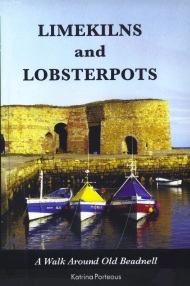Passchendaele in 360; Cavalry 360
Once in a while a really interesting commission comes along. This week I’ve been invited to give a live review of two new historical experiences on BBC Radio 4’s Front Row, Thursday August 3rd.
The first is the Royal British Legion’s Passchendaele 360, a series of ‘immersive’ virtual reality videos commemorating the centenary of the horrific third battle of Ypres in World War I, which saw 310,000 allied casualties and around 260,000 German casualties.
The second, very different, piece is Cavalry 360, NEON’s innovative in-the-round sound installation, which uses 32 wind turbines to recreate the sound of 500 cavalry horses on the English Heritage site at Chesters Roman Fort in the Tyne valley.
To find out what I thought of these two contrasting pieces, tune into Front Row between 7.15 and 7.45pm on August 3rd, or catch the review on i-player.
Personal Reflections
World War I
On a personal level, reviewing these two pieces has affected me deeply. The Royal British Legion’s films have made me look again at my grandfather’s War record. My father’s father, Herbert Brenton Porteous, signed up underage in 1916 to serve in the 7th Argyll and Sutherland Highlanders, and fought as a Lewis gunner on the Ypres Salient the following year.

He survived. Although I knew him well – he lived until I was 15 – he never talked about it. The films have made me reflect on the experiences he suffered, and have moved me to track his battalion via war diaries available from the National Archives. This photo of him, taken a few months before he left for Flanders, shows just how young he was: he, and many thousands of others who were not so lucky. As the memory World War I slips farther into history, it is more than ever vital to keep it in mind, to try to understand it – and, whatever our reflections or personal connections, to remember with gratitude and love those who served there.
Horses

Horses were an important part of soldiers’ lives in World War I. The horse has been our link with the land for thousands of years, and only in the last century has that link been broken. Mark Nixon’s Cavalry 360 at Chesters Roman Fort (right) reminds us of that deep connection between horses, humans and the landscape. The horse made it possible for troops to move quickly and efficiently – like a machine.
This is a connection which I was also trying to explore in my sound-poem, ‘Horse’, created with composer Peter Zinovieff for Radio 3’s ‘Between the Ears’ in 2011, and soon due for an exciting revival (watch this blog!). Peter based his music for ‘Horse’ on samples from the chains of the King Harry Ferry in Cornwall. Here’s a little clip from that music ; and here once again is the beautiful limited-edition book and CD, which includes details from etchings by the brilliant artist Olivia Lomenech Gill, who also created work for Michael Morpurgo’s ‘War Horse – Only Remembered’.
Romans
The Romans are celebrated for all they brought to English life, from their roads to their language. They left behind so many tangible remains, not least Hadrian’s Wall. While admiring their achievements, I’ve always felt greater sympathy with the indigenous Northern tribes, whose land the Romans sequestered, whose farms they divided and whose culture they obliterated.
My radio poem ‘This Far and No Further’, in ‘Two Countries’, explores some cultural continuities, before and since the Romans’ brief occupation of ‘Hadrian’s Wall Country’. Excerpts from the poem were used recently in an episode of Radio 4’s Making History, and here’s a picture of another excerpt, used as public art in the YHA at the new National Landscape Discovery Centre, The Sill:

Britain at Low Tide – Beadnell
Channel 4 TV, Saturday August 5th, 7-8pm
Channel 4 is repeating the episode of ‘Britain at Low Tide’ first shown last year, in which the excellent Tori Herridge and Alex Langlands explore the remains of the ‘old pier’ at Beadnell. This is the structure which archaeologist Harry Beamish and I first identified from a 1759 plan of Beadnell in 2006, when we were leading local history walks for Northumberland Coast AONB. I spent several enjoyable days, first with the CITiZAN archaeology team, then with Tori and the ‘Britain at Low Tide’ crew, looking at the archaeological evidence for Beadnell’s wider fishing history.
Watch the programme here.

You can read more about Beadnell’s fascinating history in my book ‘Limekilns and Lobster Pots’ (Windmillsteads Books 2013).





